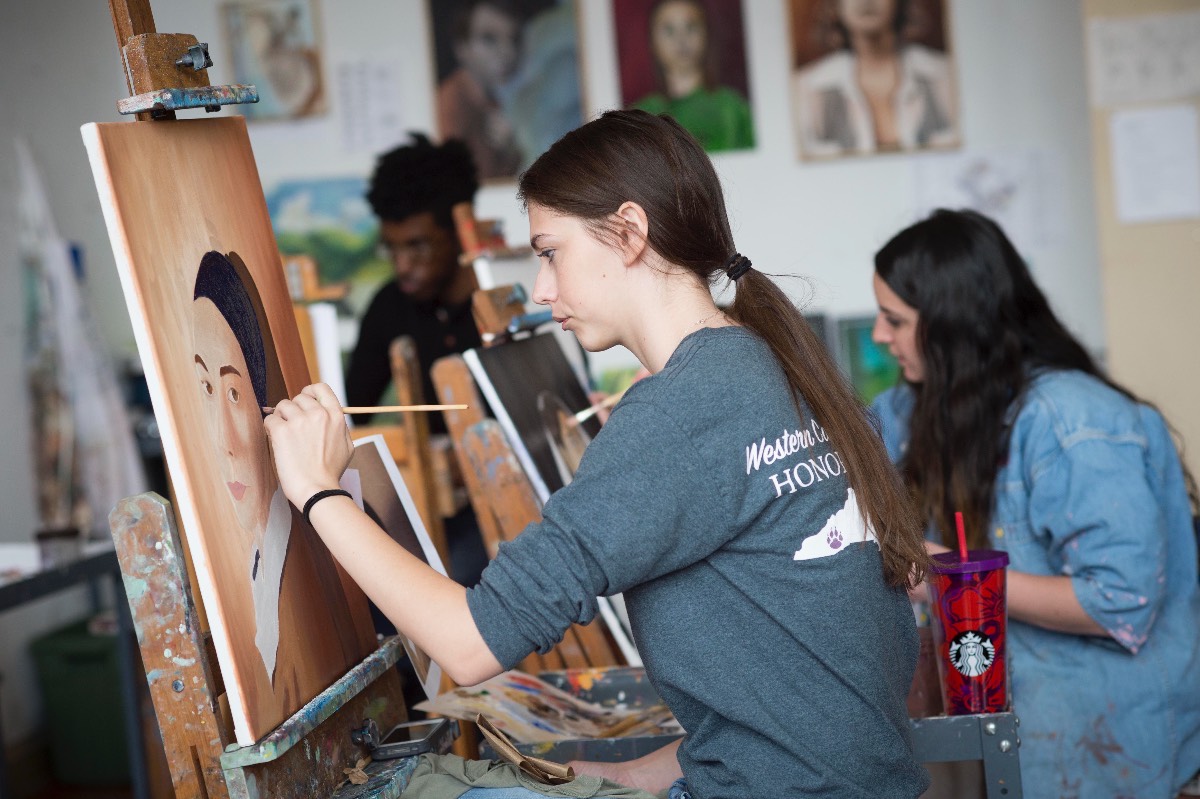Painting Studio Safety

Painting hazards are generally those presented by using toxic paint pigments and paint cleaning solvents.
Chemical Hazards
Paints are pigments mixed with a binder. Poisoning can occur if toxic pigments are inhaled or ingested. Water based paints include water, color, acrylic, gauche, tempera and casein. The preservatives used in water-based paint may cause an allergic reaction in some people. Oil paints and brush cleaners include solvents. The solvents are toxic by inhalation, poisonous if ingested, and may cause skin contact dermatitis.
Safety guidelines to minimize hazardous chemical exposure:
- Know the toxicity of the pigments you are using and use the least toxic possible. Avoid toxic paints containing lead, cadmium, mercury, arsenic and chromium.
- Use mineral spirits or vegetable oil to clean oil paint brushes instead of turpentine.
- Wear neoprene gloves when cleaning brushes in solvents and clean brushes under a fume hood.
- When transferring thinners and other chemicals from the original stock container, label the new container with the contents and associated hazards (ie. turpentine, toxic & flammable).
- Do not use regular drinking/eating containers for chemicals or paintbrush holders.
- Keep chemical containers closed when not in use to avoid evaporation and inhaling vapors.
- Paint can be removed from your hands with baby oil and then soap and water.
- Practice good hygiene. Do not put the brush in your mouth. Do not eat while painting. Keep your hands out of your mouth.
- Wash your hands after painting.
- Any glazing of paintings must be done in a ventilated spray booth.
- If paint or solvent splashes into the eyes, immiediately flush with water for a minimum of 15 minutes. Seek medical attention after any eye injury.
Equipment Hazards
- Wear eye protection when using the table saw to cut stretcher bars for canvases.
- Move easles or tables carefully to avoid back injury.
- Ensure there are no tripping hazards (electrical cords, canvases, chairs, etc.) in the studio. Tape cords to the floor with visible tape.
- Store paintings as per instructors directions.
Machine Guarding
All mechanical equipment is to be equipped with guards that prevent access to electrical connections or moving parts, such as belts and pulleys of a vacuum pump. Each worker should inspect equipment before using it to ensure that the guards are in place and functioning. Careful design of guards is vital. An ineffective guard can be worse than none at all, because it may give a false sense of security. Emergency shutoff devices may be needed in addition to electrical and mechanical guarding. Please reference the Machine Guarding Program for more information.